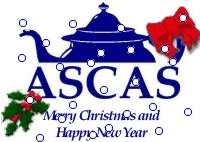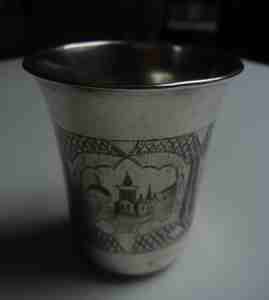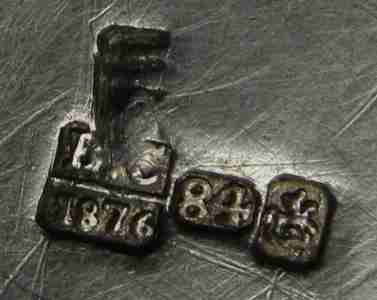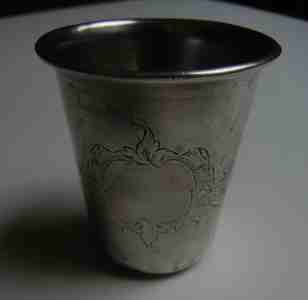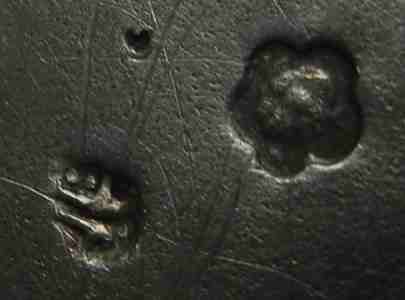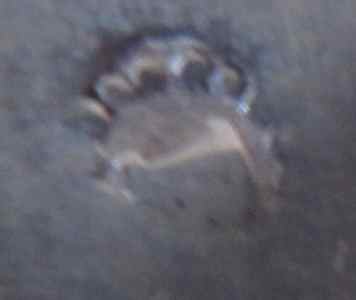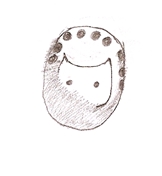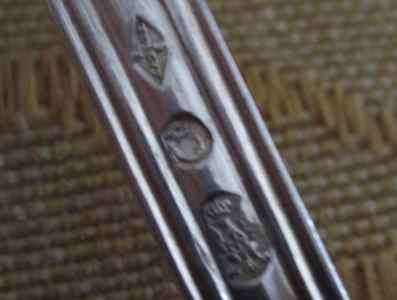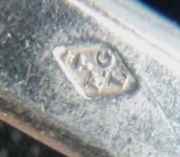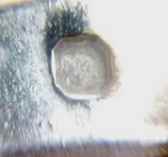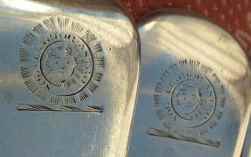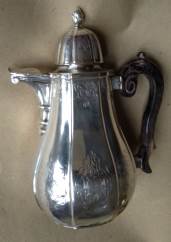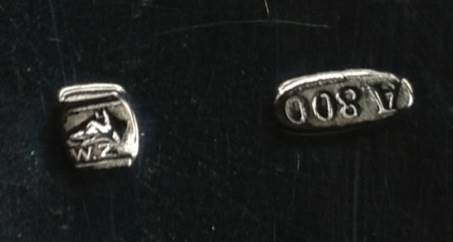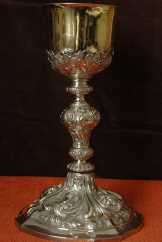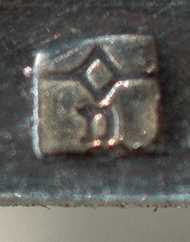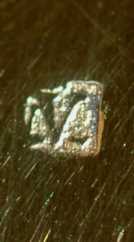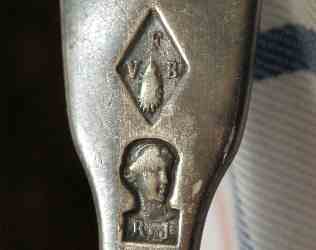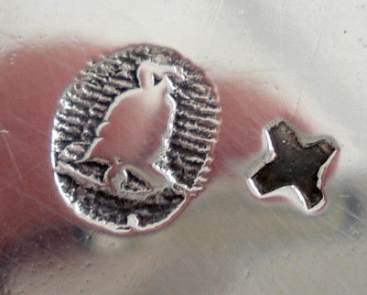2014 ASCAS membership
No fees are requested for ASCAS membership.
Members still interested to ASCAS and its activity are invited
to send an e-mail to
confirming their 2014 membership (the simplest way is to
use the 'reply' button on our December e-mail).
I apologize for this little effort asked to whomever appreciates
and supports ASCAS activity.
No action is required to unsubscribe. Members not confirming
their membership will be automatically deleted from the sending
of our monthly Newsletter and will be suspended on
February 2014.
Please accept my best wishes for a happy Christmas and a
prosperous New Year and my thanks for your present or past
appreciation of my work.
Giorgio Busetto
ASCAS Secretary
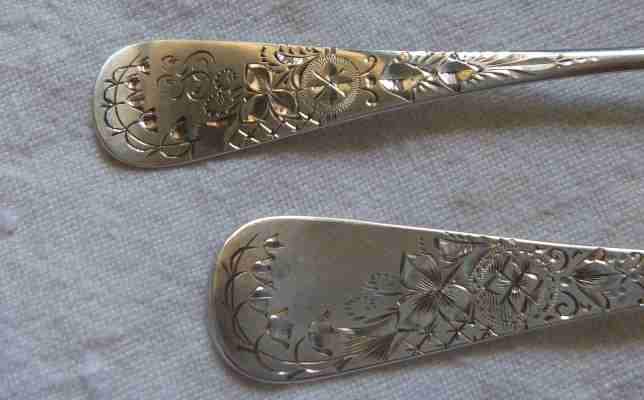
Patricia Finney presents:
19th Century American Brightcut Flatware

"Brightcut" is a kind of engraving that many
English-speaking collectors associate with 18th century
British and American silver. But later 19th century
American brightcut is a different animal altogether.
Quite a lot of the solid silver flatware sold in the US
from 1860 to about 1895 was brightcut. Some was in
matching patterns and some was more one-off, especially
the decoration on large serving pieces such as fish sets
and berry spoons.
A definition of brightcutting adapted from a collectors'
site is, a metal engraving technique created by
chiseling light-reflecting facets that stand out
brilliantly on the metal's surface.
Brightcutting on silver became so popular in the US in
the 1870s and 1880s that it's hard to group the flatware
into categories. But some contrasts can be drawn....
click here

|
Welcome to new ASCAS members:
Roger Finlay - New Zealand
Shannon Jennings - USA
Brenda Quinn - Ireland
Neil Shapiro - USA
Tom Woodward - Ireland
Josiane Poupon writes:
... I have two cups solid silver that seems to be Russian. Could
you please help me determine their origin?
Many thanks
Josiane Poupon
Claudio Pellegrino writes:
...I am trying to identify the unique mark (lion or leopard?
head in dotted oval) on a single dessert knife, perhaps a model
The remaining knives, fiddle and shell model, present the
silversmith mark A.S. in double lozenge, perhaps Antonio
Sciaccaluga active in Genoa 1843-1865.
The associated French "couvert" shows the marker's mark C.
MAHLER in horizontal lozenge and the mark Minerve 1. Charles
Salomon Mahler is a "cuilleriste" active in Paris 1818-1838
Hallmark of Savoia Eagle and Genoa Dolphin are also present on
all knives, forks and spoons.
Thank you in advance and best regard.
Claudio Pellegrino
Nidhi Bhatt writes:
...Please help me identify the maker of this French solid silver
serving spoon in variant fiddle pattern.
Nidhi Bhatt
Robin Holmes writes:
... I have this classic shaped late 18th century coffee pot,
that at first glance thought was German.
But the marks don't help. I see that you had a question in the
January 2009 newsletter where you asked for info re the A800
mark. Even the wolf/dog head with W.Z has me bamboozled.
Best regards,
Robin Holmes
Charles C. Cage writes
Regarding the marks on Riccardo Bonardi's Belgian chalice,
the mark with the 'D' below a crucible support is that of the
maker Henricus De Curte (1821-aft. 1868), a gold-, silversmith
and jeweler working in Ghent from 1848. The other mark - 'V'
with a pair of balance pans -is that of the assayer Amand Joseph
Vandenhende (1796-after 1869), working in Ghent 1836-1869.
In Belgium, the assayer's mark was struck only on pieces assayed
by cupellation before they were assembled by the silversmith;
items tested by touch-needle or after their completion will not
carry an assayer's mark.
Charles C. Cage
Maurice R Meslans writes
I was looking for something on the internet, and ran across
a question about a spoon with a FVB mark, in the next issue
someone thought it was French.
I don't think anyone ever answered it again. The lady's head
mark is that of Rio de Janeiro and I was told that it was
probably made by either Francisco Victor Bennassi ca. 1836 or
Francisco Victor Bernard 1817-1826.
Maurice R Meslans
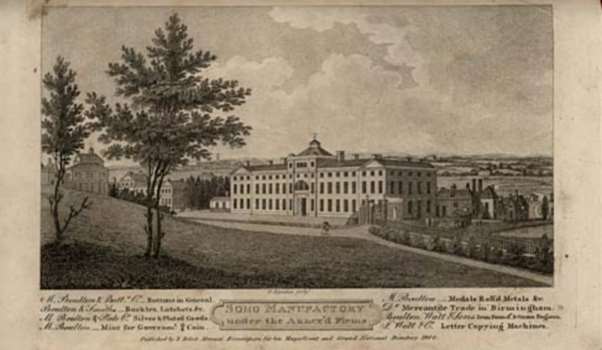
|
This month ASCAS presents an ancient image of Soho
manufactory of Matthew Boulton
MATTHEW BOULTON
SOHO MANUFACTORY
At the beginning of the 19th century, Matthew Boulton
was the larger silver and Sheffield Plate manufacturer
in Birmingham
This image is part of the
FACTORIES, PLANTS, SALESROOMS, SHOPS AND WORKSHOPS
section of www.silvercollection.it website
|
"A WORD per MONTH"
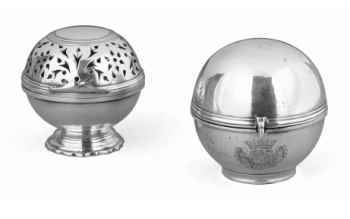
SOAP BOX
SPONGE BOX
Spherical soap and sponge boxes were made in pair
and usually accompanied a silver shaving basin (an oval
bowl with a broad notched rim that allowed the basin to
be pressed against a gentleman's neck while he was being
shaved).
The piercing on the sponge box aimed to facilitate air
circulation and dry the damp sponge. The unpierced box
accommodate a ball of soap.......
more
|
"A SILVERSMITH per MONTH"
|
|
W. & G. SISSONS
AND THEIR PREDECESSORS ROBERTS & CADMAN - S.ROBERTS,
SMITH & CO - SMITH, SISSONS & CO - W. & C. SISSONS
The firm was established in
Sheffield in 1786 as Roberts, Cadman & Co. The firm was
managed by Samuel Roberts Jr. (son of Samuel Roberts
Sr.) and George Cadman (who served his apprenticeship
under Samuel Roberts Sr.). A "sleeping" partner (only
financial, until c. 1794) was the Rev. Benjamin Naylor.
They were active as tableware manufacturers in Eyre
Street, Sheffield, in the premises owned by Samuel
Roberts Sr.
The partnership, with the addition of George Ingall
(1816), lasted until 1826 when was succeeded by S.
Roberts, Smith & Co. The partners of the new firm were
Samuel Roberts Jr., his nephew Evan Smith, his cousin's
son, Sidney Roberts and William Sissons....
more
|
"A CREST per MONTH"
ANDERSON (1), BASTARD (2), CLARKE (3), DAVY (4),
ELIOT (5), ELLIOT (6), ELLIOTT (7), ELLYOTT (8), GARDNER
(9), KEBLE( 10), OLIPHANT (11), PARKER (12), PUTLAND
(13), SMITH (14), UVERY (15), WESTBY (16), YATE (17),
YEVEREY (18),
BESTROE (19), JEFFREYS (20), PRATT (21), DAWBENEY (22),
DOLEMAN (23), FORICAN (24), HUSKISSON (25), LEDGCOMB(26),
LYNES (27), MADDOCKS (28), OLIPHANT (29), RISDON (30),
SANDERS (31), SAUNDERS (32), SUTTON(33), THROCKMORTON
(34), THROGMORTON (35),
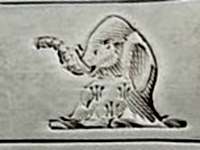
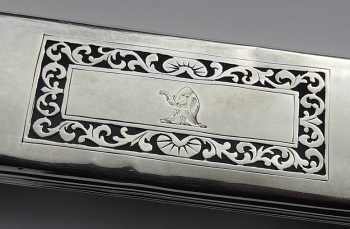
|
A crest of slightly different
shapes used by many English, Irish and Scottish families.
(1) Glasgow (2) Aslington, Norf. (3) Suff. (4) unknown
(5) Eng. (6) Cornw. (7) Cornw. (8) Eng. (9) Eng. (10)
unknown (11) unknown (12) Kent (13) unknown (14) Notts.
(15) Eng. (16) Eng. (17) Glouc. (18) Eng. (19) unknown
(20) unknown (21) Kent (22) Eng. (23) Eng. (24) Eng.
(25) Suss. (26) Eng. (27) Eng. (28) Eng. (29) Sco. (30)
Eng. (31) Bucks and Northamp. (32) Northamp. (33) Iri.
(34) Molland, Devons. (35) unknown
The crest is described as "an elephant head, couped".
The crest was found on a cut glass box with silver lid,
hallmarked London, 1818, silversmith maker Henry Tippen
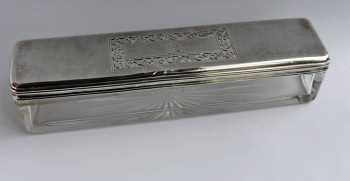
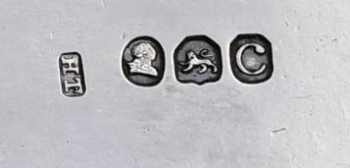
|
Closing our DECEMBER 2013 edition of
ASCAS Newsletter I hope you have appreciated its content.
Your comments, suggestions and advice will be of great help.
My thanks to Nidhi Bhatt, Charles C. Cage, Patricia Finney,
Robin Holmes, Maurice R Meslans, Claudio Pellegrino and Josiane
Poupon for their precious contributions.
Giorgio Busetto
Secretary
DISCLAIMER AND PRIVACY POLICY
ASCAS is a community of people having a common
interest in antique silver.
It is a non-profit association without commercial links.
Membership is open to whomever has a true interest in
this subject matter.
ASCAS has no real property and no fees are requested nor
accepted from members.
ASCAS keeps in touch with its members only through
periodical newsletters, e-mails and web-site updating
and ignores and is not responsible for any other
activity pursued by its members.
Likewise, ASCAS is not responsible for opinions,
evaluation and images displayed, and in any form
published or supplied for publication, by its members
who, in any case, maintain the property of their works
and assure the respect of national and international
legislation about Intellectual Property.
ASCAS does not have the full addresses of its members (only
town, country and e-mail address are requested for
membership).
ASCAS handles and protects with care its members' e-mail
addresses, will not disclose the addresses to third
parties, will use this information only to reply to
requests received from members and for communications
strictly related to its activity.
These rules are expressly accepted by submitting the
membership request.
|
|
 newsletter
# 115 December 2013
newsletter
# 115 December 2013








